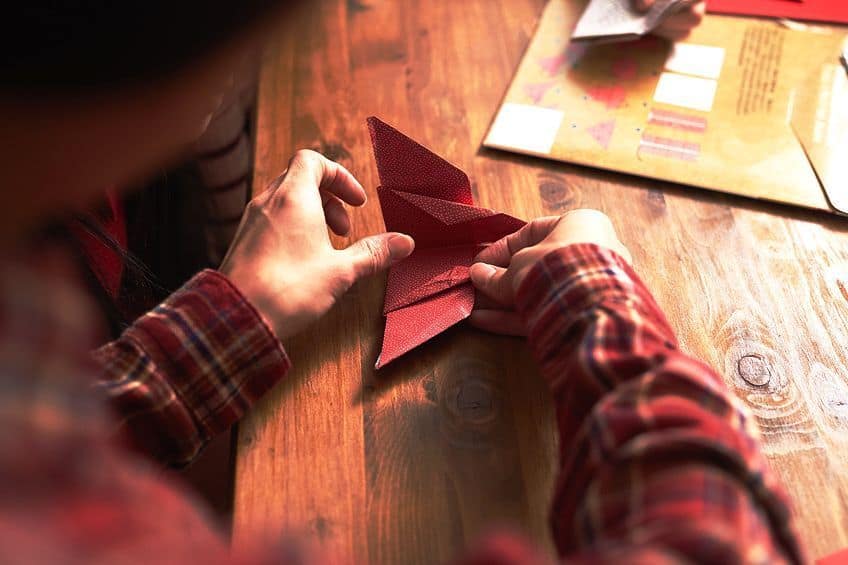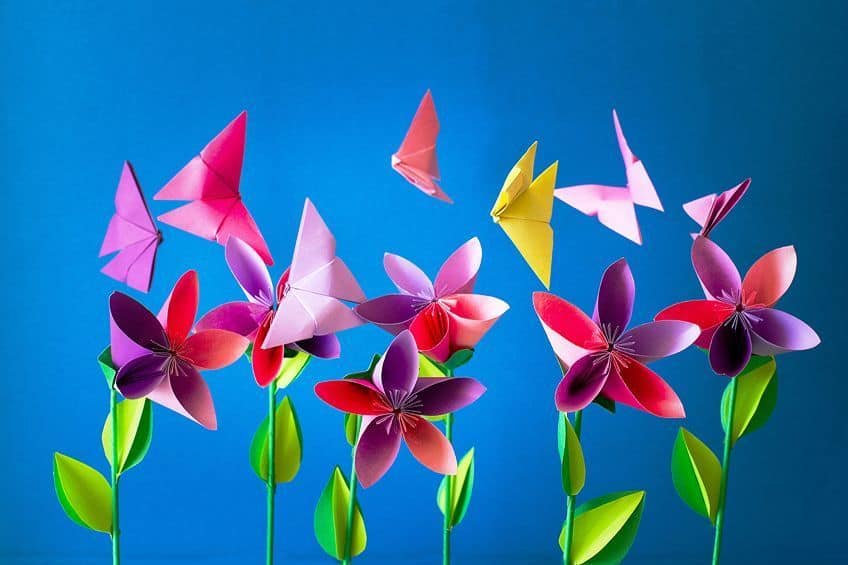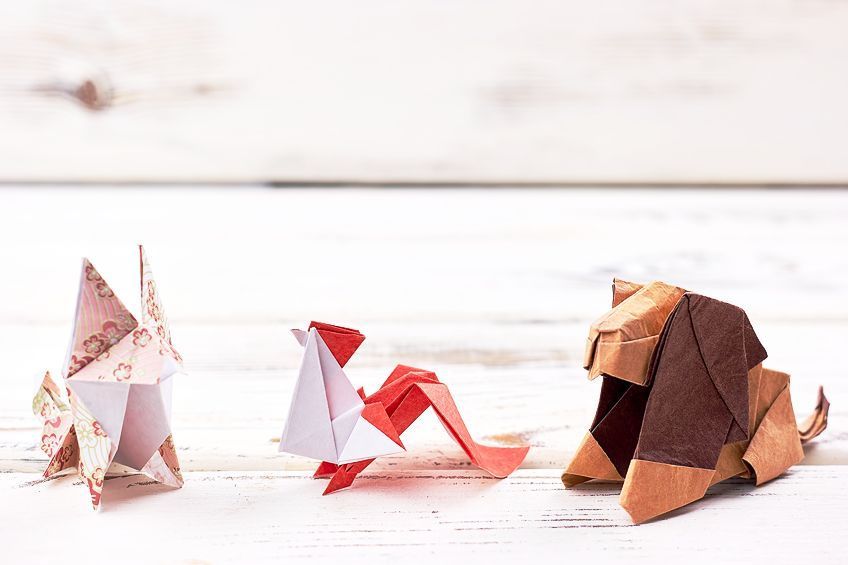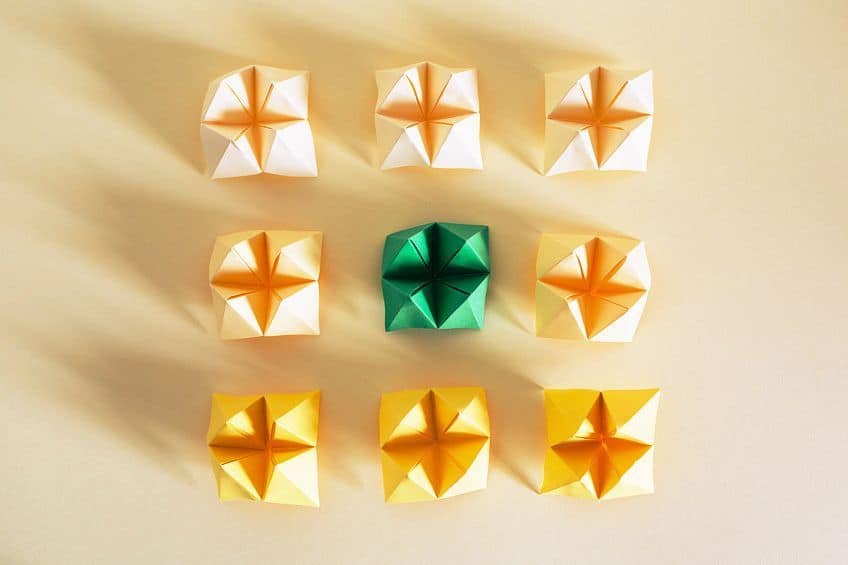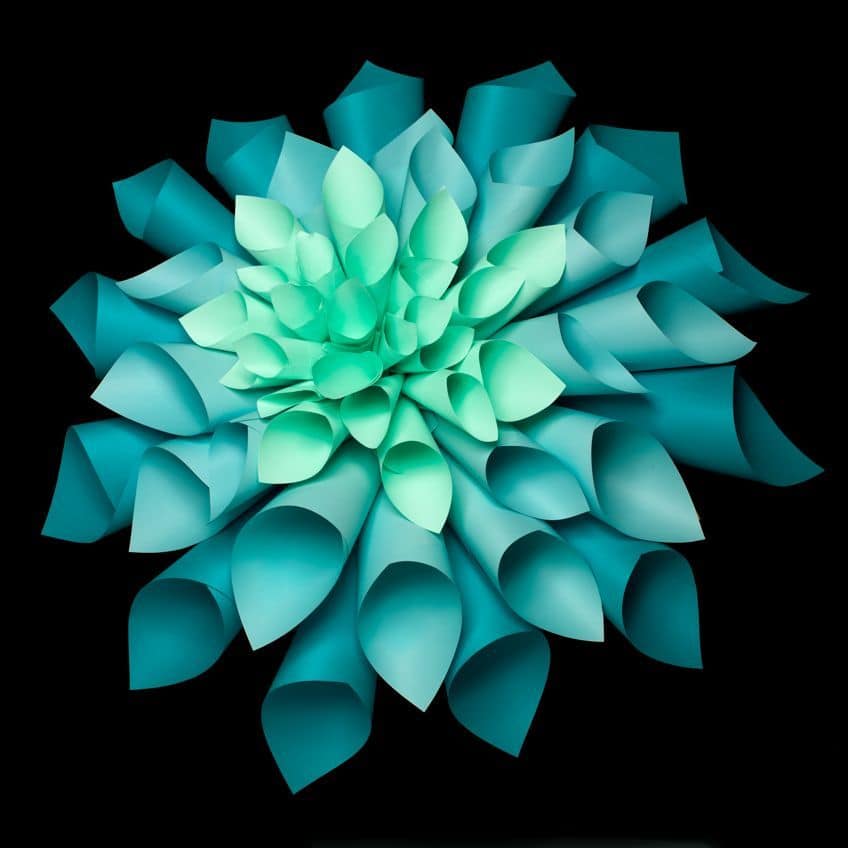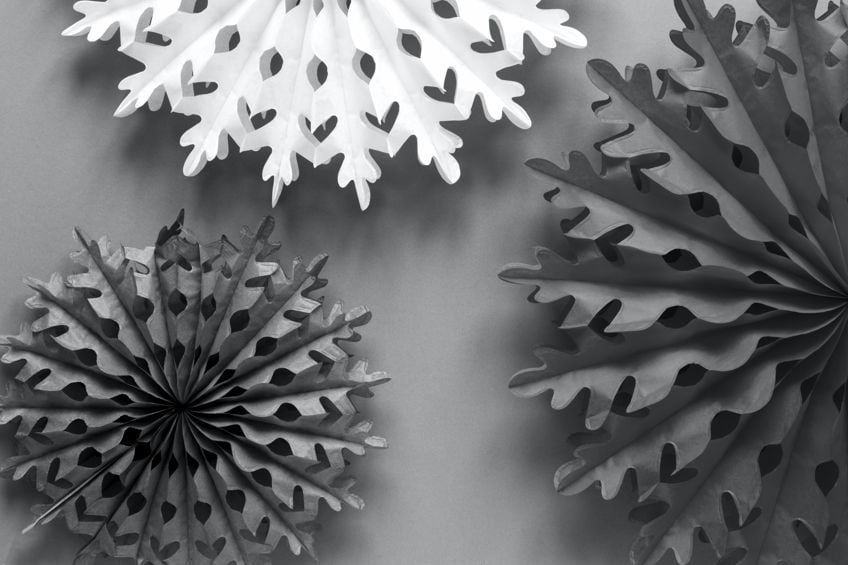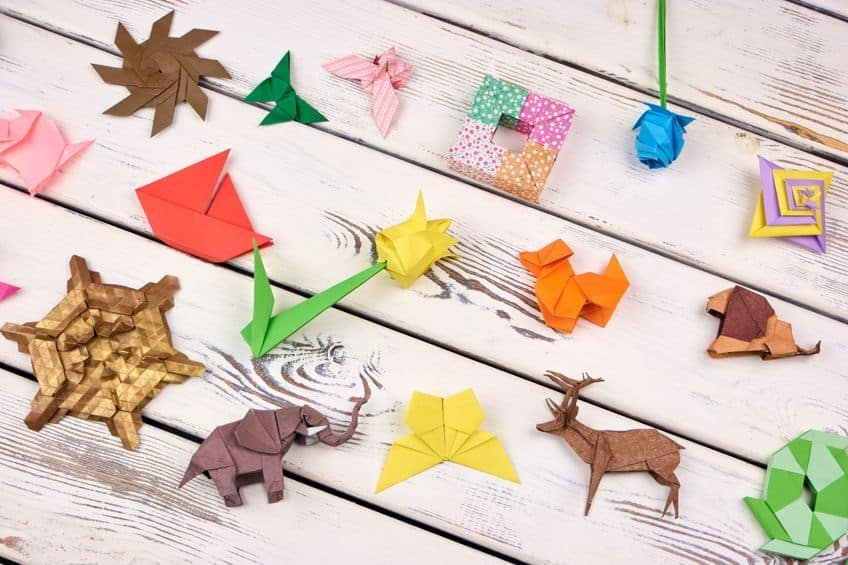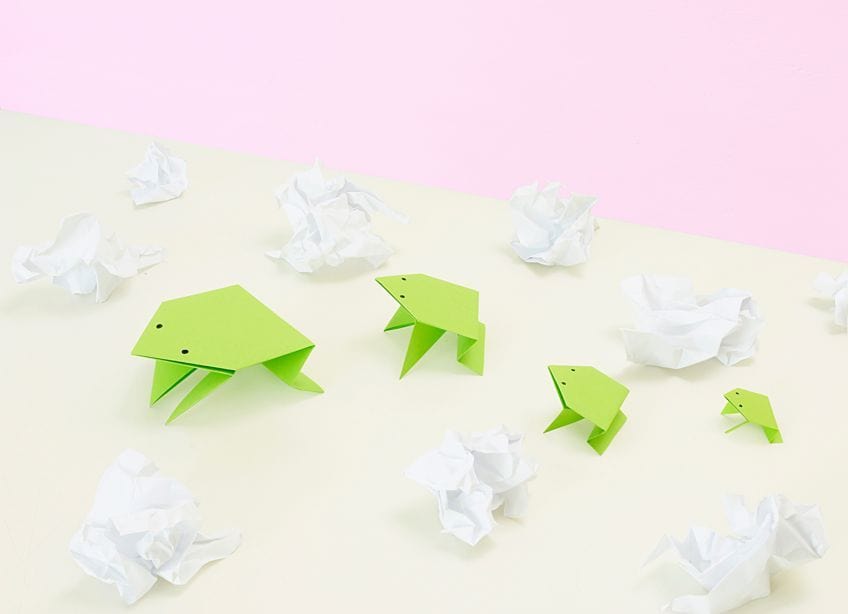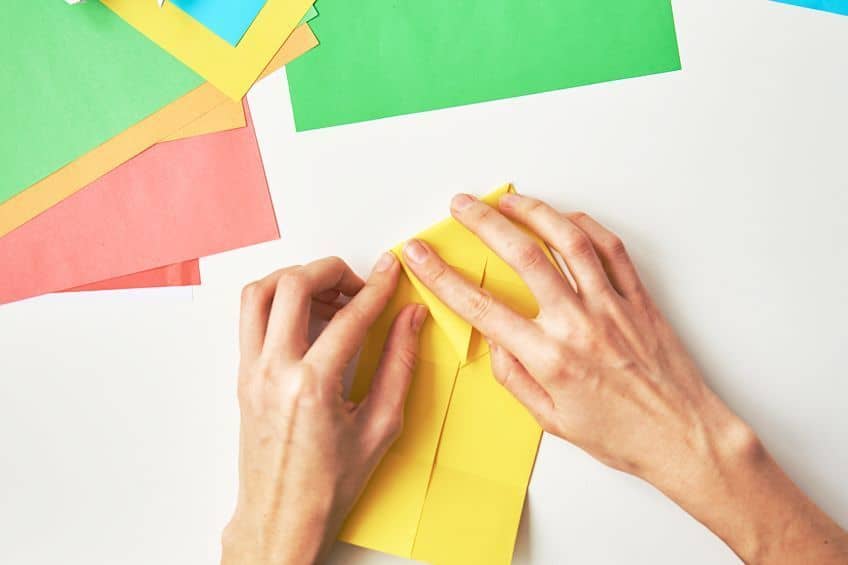What Is Origami? – A Beginners Guide to Japanese Paper Art
What is origami, who created origami, and when did it originate? Origami, meaning paper folding, is a traditional Japanese art form that encompasses many unique techniques used to create miniature paper sculptures. In this article, we will explore the intricate world of origami and its history, as well as a few tips and tricks for those who wish to learn more about the benefits of learning this incredible art form! Read on for more about this sophisticated art form!
Contents
Defining Origami: Unpacking Origami Meanings
Today, it is becoming increasingly difficult to peel ourselves away from the demands of technology and computer screens. Luckily for you, we are here to remind you that learning a new art form can be incredibly beneficial to your personal growth, health, and education. There is a Zen Buddhist philosophy called Shoshin, which refers to the state of mind one adopts when learning new things. Shoshin is understood as adopting a “beginner’s mindset” and stresses that having an eager attitude to explore new things is already one step ahead in advancing your practice. With Shoshin in mind, we hope to explore the Japanese art form known as origami, which has many benefits.
So, what is origami, and is origami art? Origami, meaning paper folding, is a traditional Japanese art form that requires one to learn various paper folding techniques to produce unique sculptures. Origami involves the creation of small complex sculptures produced from a single piece of paper and made without cutting the paper or adding glue in any way. There are many different approaches to learning the art of paper folding but most artists tend to start with the basic structures. The term origami itself was derived from the Japanese words “ori”, meaning “to fold” and “kami”, meaning paper.
With the definition of origami in mind, is origami art?
In short, yes. It is a traditional art practice that enables artists to fold unique patterns and was passed on from generation to generation. One can sculpt a variety of subjects, from animals to flowers, and other natural elements. The paper folding art is a diverse art form that also relies on complex geometry and mathematics to develop more innovative designs. Who created origami, what is origami paper, and what techniques are used to create origami art? To gain a deeper appreciation for origami, we will explore a brief history of origami below, such that you will feel enlightened at the amazing potential of paper alone!
The History of Origami
Who created origami? From paper frogs to paper flowers, origami is a marvelous art form that requires lots of patience and practice to perfect. The paper-folding art form is said to date back centuries ago with its earliest origins speculated to be in China. It was also more likely that paper folding was applied to other materials and processes long before it was transformed and recognized as an art form. When paper was first introduced into Japanese society, it was considered an expensive and precious commodity. Paper was initially used for official documents, luxury items, and religious ceremonies. Recreational folding is also thought to have originated with materials such as leather and cloth, which ancient people may have experimented with.
Traditional origami was used in Shinto rituals as offerings to the Gods and was primarily a ceremonial item. As time progressed and paper became more accessible to the masses, its use expanded to recreational paper folding and eventually origami, such that people adopted the practice as a form of meditation and artistic expression. The Edo period, which lasted between the early 17th century and the mid-19th century saw origami become increasingly popular such that it was also practiced by samurai warriors to practice their dexterity. The Edo era also saw the development of origami emerge from simple designs to more complex designs with major artists such as Akisato Rito, who even published a book on different origami models and techniques.
With the advent of woodblock printing in the 19th century, many publications about paper folding art and origami techniques were in circulation and became a common pastime for many people across different social classes. Its function differed from gifts to home décor and elements for special occasions. In Japan alone, origami was an integral aspect of childhood education since children learned basic folding methods at school and were viewed as an art form that was also a form of cultural heritage.
The practice was also used to develop spatial reasoning skills in children and teach them mathematical concepts.
Today, origami is recognized internationally as a special and unique art form practiced by renowned artists such as Akira Yoshizawa, who helped popularize the medium. Yoshizawa also developed a new system of folding techniques known as the Yoshizawa-Randlett notation, which has become the new standard for describing origami models. The significance of origami in the current era exceeds its origins and history as more than a cultural art form of Japanese heritage and extends as a practice to hone one’s appreciation of natural forms and the beauty of paper.
The Basics of Origami
What is origami paper, and are there different types of paper that one can use in the paper folding art? Origami paper is a special type of paper, which we will dive into below. Now that you have a brief understanding of the history of origami, it is necessary to explore the basics of origami by reviewing the basic terminology, the different types of paper, and the common symbols and diagrams used in paper folding art.
Types of Paper Used in Origami
In origami, there are different types of paper that one can use that will also influence the result. Each type of paper offers unique qualities that are suited to the different levels of models found in origami.
Below, we have summarized a list of different types of paper used in origami such that you can decide on what aesthetic you want to achieve.
- Kami: This type of origami paper is a standard paper that is specifically designed for paper folding and is incredibly lightweight.
- Washi paper: This origami paper is a traditional Japanese paper manufactured from mulberry fibers, which makes the paper durable and slightly textured.
- Tant paper: This type of paper folding paper is versatile and quite firm to handle, making it an ideal choice for building complicated structures.
- Foil paper: This type of origami paper is coated with metallic foil, which gives it a shiny surface and adds an eye-catching element to the design of your origami.
- Tissue paper: While tissue paper is less preferred for folding the main form, it can still be used to decorate or build on your origami piece to add a sense of elegance and translucency.
Folding Techniques and Terminology
To better understand the art of origami, one will be wise to learn the terminology of the practice, such that when you begin your first experiments with origami publications, you are already equipped. Below is a list of terms that you should know when creating origami.
- Valley fold: This term describes a type of fold that is created when you fold the paper towards you along a vertical line to create a “valley” on the paper surface.
- Mountain fold: This term refers to the act of folding the paper away from you and along a vertical line to create a raised “mountain peak” on the surface.
- Rabbit ear fold: The rabbit ear fold is achieved by folding two opposite corners of a square origami paper inward to create a shape that resembles the ear of a rabbit.
- Inside reverse fold: This folding term describes the process of folding a section of the paper toward the center of the paper square to create a new layer.
- Outside reverse fold: This term describes the step of unfolding a previous fold and folding it in the opposite direction to create a flap.
- Crimp fold: The crimp fold refers to the act of folding a small portion of the paper to create a crimp crease.
- Sink fold: The sink fold refers to the action of folding a section of the paper inward, as though you are tucking it inside another fold.
- Petal fold: The petal fold describes the act of folding multiple layers of paper to form a flower-like shape.
- Squash fold: This term describes the process of opening a flap and pressing it flat downwards to create a flattened shape.
- Swivel fold: The swivel fold describes the process of rotating a portion of the paper without altering the rest of the design.
Common Origami Symbols and Diagrams
In addition to the different origami folding techniques and terms, it is equally as important to cover the common origami symbols and diagrams so that you understand their meanings.
Below is a list of a few common diagrams and symbols found in origami that will assist you when following instructions on how to create basic origami.
- Solid lines: If you spot solid lines, it is key to recognize that these represent areas where you need to create mountain folds to create raised peaks.
- Dashed lines: These lines represent areas on the paper where you need to create depressions or valley folds.
- Arrowheads: This marking indicates the direction in which you need to fold the paper and is the most common symbol.
- Circles and dots: These marks indicate specific points on the sheet that need to be aligned or folded with precision and accuracy.
- Arrow curves: This marking symbolizes areas where you would create outside reverse folds to unfold a previous fold and fold it in the opposite direction.
- Double arrowheads: This symbol signifies a squash fold, which requires you to open a flap and press it down flat.
- Arrow loops: This symbol represents the action for inside reverse folds, where one would fold a portion of the paper inside itself.
- Xs and crosses: These markings indicate areas with preliminary folds and are used to prepare the sheet for more complex folds to follow.
- Dash-dot lines: These lines convey hidden creases that are used in later stages of the folding process.
- Diagonal lines: These lines indicate creases that are created by folding the paper in a diagonal direction.
Advanced Origami Techniques
Learning advanced origami folding techniques requires patience, dedication, and precision. It demands a deep understanding of basic folds and the ability to follow complex diagrams to create unique designs. As one masters the basics, it is advised that you repeat your paper folding maneuvers religiously. Below, we will revise a few advanced origami folding techniques that you can look forward to on your origami journey.
Wet-Folding
This technique involves the application of water to the paper as you are folding it to make the paper more malleable and allow for more organic shapes. The wet-folding technique is used when working with stiff or thick paper and prevents too many cracks and creases from showing up. The dampened paper allowed the artist to shape the model with greater flexibility and create more lifelike pieces.
This method is often used for more complex designs that require intricate folding and shaping to add an extra dimension to the process.
Modular Origami
This method involves the assembly of multiple identical units of origami called modules to form a larger structure. Each module is created separately and can be connected without the use of an adhesive. The modular approach requires one to repeat the process of creating a single type of module again and again while allowing one to explore different colors and sizes of paper. The modular origami technique produces visually captivating paper sculptures that can turn into large-scale artworks.
Tessellations
How does one create tessellations using origami? To create tessellations, one has to fold a pattern or shape repeatedly in a way that makes all the shapes fit together without any gaps. One needs to establish a base grid by folding a sheet of paper into an accordion-shaped pleat. The selected pattern is then created on the base grid by manipulating the folds to create the desired shape. This technique requires the hands of an advanced origami practitioner since the artist needs to ensure that the edges of each shape align with the adjacent shapes, such that there is uniformity across the grid. This technique requires a high sense of accuracy and detail as small inaccuracies could disrupt the entire pattern.
Through patience, experimentation, and a strong knowledge of design, one can complete a tessellation to capture the stunning geometric potential of origami.
Kirigami
This technique differs from the traditional techniques of origami and involves the folding and cutting of paper to create detailed artwork. Kirigami can be considered a separate art form, however, its close connection to origami as part of its process makes it an ideal technique to pick up after learning the basics. The process of kirigami involves folding the paper to create a base pattern and then making precise cuts along specific lines to create openings that form shapes within the paper. One can truly explore the potential of paper folding with kirigami to “sculpt” paper and even create elaborate designs, pop-up artworks, and snowflakes. This method requires careful planning to produce creations that showcase the beauty of the cutting and folding method.
Famous Origami Models
While there are many techniques in origami to explore, there are also different models in origami that encompass both the traditional models and the contemporary models. Over time, origami has grown to include more complex models that require one to master the basics. Learning the different origami models is essential to broadening one’s creative skills by challenging one to improve on their problem-solving abilities.
By mastering different models, you can achieve a sense of accomplishment and boost your confidence while managing complex origami projects.
Traditional Origami Models
These types of origami models describe the traditional forms that have become the foundation of origami since its origins around the 17th century. Traditional origami models are crucial designs that have been passed down through generations and are usually simple yet elegant in their design. Below, you will find a list of the basic models in origami that involve simple folding techniques and clean lines.
- The origami crane model is among the most popular traditional models that symbolize peace, longevity, and hope in Japanese culture. The crane model involves an intricate folding process to create a bird with its wings outstretched.
- The origami frog model is a traditional Japanese model that is playful since it is also interactive. The origami frog model is created in such a way that it can hop when you apply pressure to its back.
- The balloon origami model is another interactive model that can be inflated through a small opening by blowing into it. Similar to the frog model, the balloon model is playful and appeals to children and adults alike.
- The boat model is a simple model that can also be used in water. These models may not float for long; however, they can remain on the surface of water for a good five minutes.
- The fortune teller origami model, which is also recognized as the cootie catcher, is another famous interactive origami model that was used to play fortune-telling games. You might even remember this one from your early school years.
- The lily origami model is an elegant model that is folded to resemble a blooming flower. The lily model is used by many beginner origami folders.
- The masu box model is another traditional Japanese model that is used primarily as a gift box to store small items.
- Another common traditional origami model is the fish model, which can be folded in other ways to create different aquatic creatures.
- The cup origami model is a practical and simple model that is used to hold small and light objects such as small candies or paper clips.
Contemporary Models
While the traditional models may not seem simple upon practice, one can also explore the Contemporary origami models, which exhibit the innovation of origami artists over time who have helped the art form evolve by testing the limits of traditional folding techniques.
Below are a few Contemporary origami models that you can try your hand at when practicing origami!
- Insect origami models involve intricate folding steps that result in complex designs for various insects. These can include insects such as dragonflies, butterflies, and beetles, which show off more lifelike features than traditional models.
- Animal origami models are another Contemporary type of origami, which includes a wide range of animal models such as elephants, pandas, and lions. These models can vary from realistic to stylized interpretations and are incredibly fun to learn.
- Modular origami stars are another Contemporary origami model that artists have created to use as decoration. These miniature stars are popular decorations for holidays and special occasions since they are cute and detailed.
- Action origami models are a more complex type of Contemporary origami that includes movable parts such as spinning tops, opening box flaps, and flapping wings. These models are designed to be interactive and add a level of playfulness to
Benefits of Practicing Origami
What are the benefits of practicing origami? Origami provides many helpful benefits that enhance our meditative abilities and helps reduce stress and anxiety. Among the many benefits is the fact that origami is a calming art form that enables us to focus on the rhythmic qualities of folding paper. The repetitive process of origami also promotes a sense of tranquility and mindfulness. Practicing origami can help one to disconnect from the daily pressures of life and engage in a therapeutic activity that also encourages creativity.
Apart from origami being an incredibly useful meditative process, the art form can also improve one’s hand-eye coordination and motor skills. It is helpful to remember that origami requires precision when folding, so, to create intricate designs one needs to fine-tune their dexterity and motor skills. As one manipulates paper with their hands, they improve their hand-eye coordination and develop spatial awareness, which can also prove incredibly beneficial for elderly people and children.
Finally, origami hones one’s skills in problem-solving and cognitive development.
The process of transforming a flat piece of paper into a three-dimensional structure requires problem-solving capabilities and logical thinking. The ability to also follow complex instructions and decipher the different patterns, techniques, and symbols also sharpens one’s analytical and spatial reasoning skills. As an artist, one can also explore the different possibilities of design and engage in a creative and imaginative art form that stimulates one’s thinking around the possibilities for the medium of paper. As one might note, there is no shortage of benefits when it comes to learning about origami and its different techniques.
Common Mistakes and Troubleshooting
As a beginner, you might find that you will be prone to many mistakes in the folding process. Below, we have included a brief list of the most common mistakes found when learning origami, as well as a few tips for fixing your mistakes and troubleshooting difficult models. The most common mistakes found when learning origami include:
- As a beginner, it is easy to make incorrect creases when folding in the wrong direction or even creating uneven creases. Which can lead to. Must happen models. One can be wise to always ensure that their creases are accurate and sharp when folding.
- The error of misalignment is also one of the most common mistakes to make when first learning origami. You may find that not all your edges are aligned properly and this can result in an asymmetrical or a lopsided model. It is advised that you pay close attention to the alignment of your ages while folding.
- You may also find yourself using the wrong paper, which can appear in the result of your folding process. This can show up in your process as you find it difficult to fold a particular model, or you find that the paper is too thick or too thin. Remember that the type of paper you use can also affect the result of your model.
Luckily, we have also included a list of tips on what to do when you do spot these mistakes. Below are a few steps that you could follow when you spot a mistake:
- Do not be afraid to start over once you make a mistake or spot it early on in the process. It is best to start over with a fresh sheet of paper to avoid compounding your error and distorting the model further.
- If you do catch yourself making a mistake in the middle of folding, gently unfold the paper to the point where you made the error, and redo that step. If the paper is overly bent or damaged, then it is best to start again with a fresh sheet of paper.
- It is also wise to use a bone folder, which can help you make more precise and crisp creases while preventing mistakes when using only your fingers.
If you find yourself following a complicated video tutorial or trying to create a complicated model, then here are a few tips to help you troubleshoot the difficult models. Remember that patience is key, and with practice also comes perfection.
- If you happen to start a complicated model right after you achieve the basics, but you find that the complex model is too challenging, it is best to revert to simpler models and practice your skills before attempting more complex ones.
- Remember to work patiently and slowly. Avoiding rushing through a challenging model so you can also avoid mistakes. It is advised that you take your time and follow the instructions step by step. Remember to also be patient with yourself as this is a new art form you are learning.
- By watching video tutorials, you may find it easier to understand the complex folding techniques, since visual guidance has always proven to be an efficient form of education.
The art of origami is no easy art form to learn in a day. Remember to practice patience and take your time when learning as a beginner. Whether you are learning advanced techniques or traditional techniques, it is always best to take a step back or take a break from your process from time to time. We hope that you have enjoyed learning more about origami, its history, and the many incredible models that one can expand on!
Frequently Asked Questions
What Is the Difference Between Origami and Kirigami?
Origami, meaning paper folding, is a traditional Japanese art form that involves the act of paper folding to create sculptures using only folding techniques. The art of kirigami, on the other hand, is a variation of origami and paper folding that involves both the folding and cutting of paper to produce detailed designs. Origami focuses solely on the art of folding, while kirigami is a development of origami that includes paper cutting and enables artists to practice more layered artworks.
Can You Make Origami With Any Type of Paper?
Origami can be made with different types of paper, however, it is important to remember that your choice of paper can affect the result of your sculpture. It is advised that you use the traditional origami paper called kami to enable an easier folding process. Origami can also be made from other types of paper such as gift wrap, printing paper, or recycled materials. It is advised that you use thin paper since thicker papers require more effort when folding. You can also experiment with different types of paper and new textures to decide on the final visual output of your origami sculpture. So long as the paper is square and creases well, you can surely enjoy origami through a wide variety of materials.
How Long Does It Take to Learn Origami?
While each individual’s learning process is unique, it does take time to learn origami and it is dependent on your dedication, the complexity of the models you are learning, and your previous experience in the field of craft. It usually takes a few minutes to create simple traditional origami designs or basic folds to achieve quicker results. Mastering the more complex origami models can take up to several weeks or even months of regular practice. As in any art form, it is advised to practice consistently and adopt a mindset of patience to improve your origami skills. One can also attend regular workshops, watch video tutorials, and take lessons from experienced origami artists to speed up the process.
Can Origami Be a Profitable Hobby or Career?
In terms of profitability, origami is dependent on your level of skill and your ability to sell origami creations via online platforms, your local community, markets, or other craft fairs to earn an extra income. Like any artistic practice, selling your artwork requires strategy and planning to earn money. Through networking and building a strong online presence, artists and origami creators can attract audiences interested in their niche art form. Today, there are a few origami artists and designers who have turned their passion for origami into a career. Through advertising, product design, and using origami as a commercial element, origami can prove to be a profitable practice and attract those who wish to create custom pieces.
Liam Davis is an experienced art historian with demonstrated experience in the industry. After graduating from the Academy of Art History with a bachelor’s degree, Liam worked for many years as a copywriter for various art magazines and online art galleries. He also worked as an art curator for an art gallery in Illinois before working now as editor-in-chief for artfilemagazine.com. Liam’s passion is, aside from sculptures from the Roman and Greek periods, cave paintings, and neolithic art.
Learn more about Liam Davis and about us.
Cite this Article
Liam, Davis, “What Is Origami? – A Beginners Guide to Japanese Paper Art.” artfilemagazine – Your Online Art Source. September 1, 2023. URL: https://artfilemagazine.com/what-is-origami/
Davis, L. (2023, 1 September). What Is Origami? – A Beginners Guide to Japanese Paper Art. artfilemagazine – Your Online Art Source. https://artfilemagazine.com/what-is-origami/
Davis, Liam. “What Is Origami? – A Beginners Guide to Japanese Paper Art.” artfilemagazine – Your Online Art Source, September 1, 2023. https://artfilemagazine.com/what-is-origami/.



